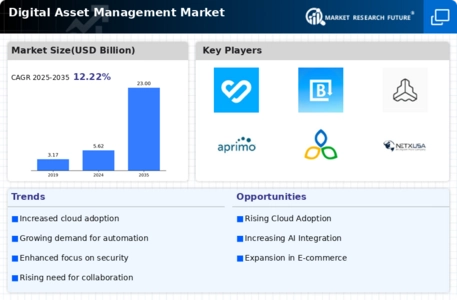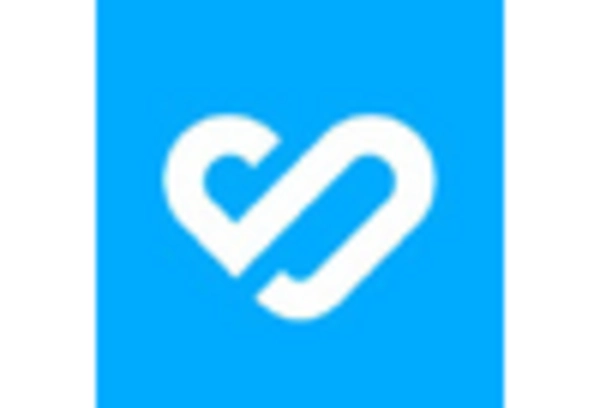Growth of E-Commerce Platforms
The rapid expansion of e-commerce platforms is contributing to the evolution of the Digital Asset Management Market. As online retail continues to flourish, businesses require efficient systems to manage product images, videos, and other digital assets. The e-commerce sector is projected to grow at a rate of over 10% annually, which in turn drives the demand for digital asset management solutions tailored to the needs of online retailers. These solutions facilitate the organization, retrieval, and distribution of digital assets, enabling e-commerce businesses to enhance their customer experience and streamline operations. This growth trajectory suggests a robust future for digital asset management in the e-commerce domain.
Emergence of Remote Work Culture
The rise of remote work culture is reshaping the Digital Asset Management Market. As organizations adapt to flexible work arrangements, the need for accessible and collaborative digital asset management solutions becomes increasingly evident. Remote teams require tools that allow them to share, edit, and manage digital assets seamlessly, regardless of their location. The market for cloud-based digital asset management solutions is expected to witness substantial growth, with projections indicating an increase of around 25% in adoption rates. This trend underscores the importance of digital asset management systems in supporting remote work environments, thereby driving innovation and investment in the sector.
Rising Demand for Digital Content
The increasing consumption of digital content across various platforms appears to drive the Digital Asset Management Market. As businesses and individuals generate vast amounts of digital assets, the need for efficient management solutions becomes paramount. Reports indicate that the digital content creation market is projected to grow significantly, with estimates suggesting a compound annual growth rate of over 15% in the coming years. This surge in content creation necessitates robust digital asset management systems to streamline workflows, enhance collaboration, and ensure easy access to assets. Consequently, organizations are investing in advanced digital asset management solutions to optimize their content strategies and maintain a competitive edge in the market.
Need for Enhanced Security Measures
In an era where data breaches and cyber threats are increasingly prevalent, the Digital Asset Management Market is witnessing a heightened focus on security. Organizations are becoming more aware of the vulnerabilities associated with digital assets, prompting them to seek solutions that offer advanced security features. The market for digital asset management solutions that incorporate encryption, access controls, and audit trails is expanding. It is estimated that the demand for secure digital asset management systems could grow by approximately 20% over the next few years. This trend indicates that businesses prioritize safeguarding their digital assets, thereby driving the adoption of sophisticated management solutions.
Integration of Multi-Channel Marketing Strategies
The shift towards multi-channel marketing strategies is influencing the Digital Asset Management Market significantly. As companies aim to reach consumers through various touchpoints, the need for cohesive asset management becomes critical. Effective management of digital assets across multiple channels ensures brand consistency and maximizes marketing efforts. Research suggests that organizations utilizing integrated digital asset management solutions can improve their marketing efficiency by up to 30%. This trend indicates a growing recognition of the importance of streamlined asset management in executing successful marketing campaigns, thereby propelling the demand for digital asset management solutions.

















Leave a Comment